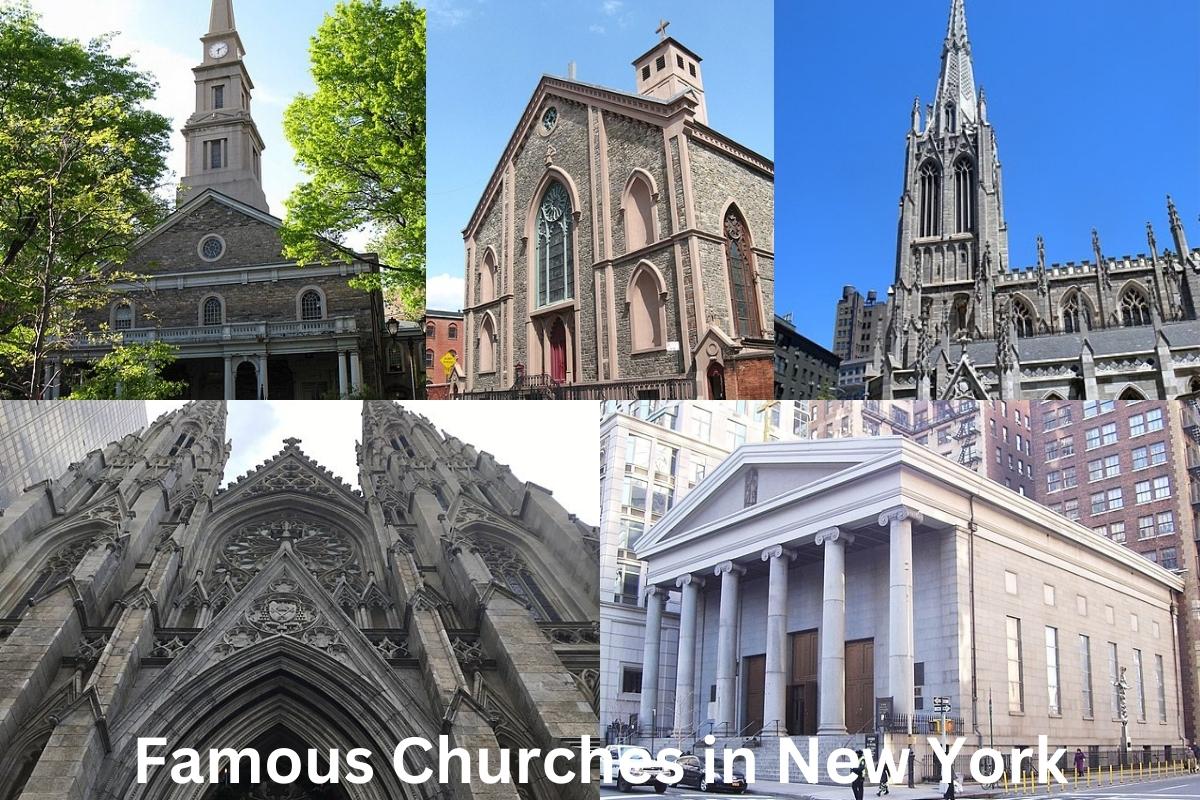The churches in New York are some of the most visually interesting and historic buildings in the city.
Once the landing point for millions of people immigrating to the USA, New York has had a very diverse mix of nationalities and religions that have passed through it.
Those that stayed over the centuries built some of the finest places of worship in the western world.
With such a rich history is it any wonder that New York has so many churches and cathedrals in such a relatively small place?
If you are thinking of visiting some time make sure to check out some of the most famous churches in New York listed below.
Famous Churches in New York
1. St. Patrick’s Cathedral
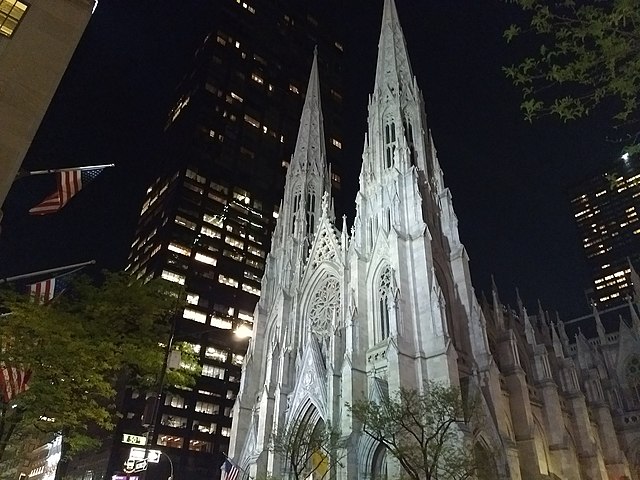
St. Patrick’s Cathedral is a Catholic cathedral in New York City’s Midtown Manhattan district. It serves as both the Archbishop of New York’s residence and a parish church.
The cathedral is located right across from Rockefeller Center on a city block surrounded by Fifth Avenue, Madison Avenue, 50th Street, and 51st Street. It is the biggest Gothic Revival Catholic cathedral in North America, designed by James Renwick Jr.
Beginning in 1858, the cathedral was built to serve the burgeoning Archdiocese of New York and to replace St. Patrick’s Old Cathedral.
The cathedral was finished in 1878 and consecrated on May 25, 1879, after work was suspended in the early 1860s due to the American Civil War.
James Renwick Jr. built the archbishop’s home and rectory in the early 1880s, and the spires were erected in 1888. From 1901 to 1906, a Lady chapel designed by Charles T. Mathews was built.
On October 5, 1910, the cathedral was dedicated when all of its debts were paid off. The cathedral has undergone extensive restorations numerous times, notably in the 1940s, 1970s, and 2010.
St. Patrick’s Cathedral is covered in marble and has a number of stained glass windows. It is 332 feet (101 meters) long and 174 feet (53 meters) wide at the transepts.
The cathedral’s main entrance on Fifth Avenue is flanked by towers with spires that rise 329.5 feet (100 m). The northern tower is home to nineteen bells, while the interior is home to two pipe organs.
The interior has a nave flanked by chapels, two transepts, a chancel and apse, and a crypt. The rectory, Lady chapel, and archbishop’s home are located east of the apse, facing Madison Avenue.
The cathedral is a certified landmark in New York City and is on the National Register of Historic Places.
2. Grace Church
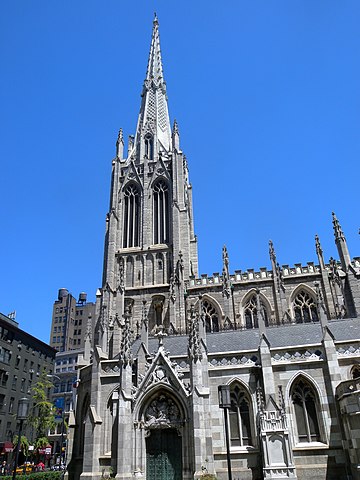
Grace Church is a historic parish church in Manhattan, New York City, and is affiliated with the Episcopal Diocese of New York.
The church is situated at 800–804 Broadway, near the intersection of East 10th Street, where Broadway bends to the south-southeast, aligning it with Manhattan’s avenues.
Grace Church School and the church residences are situated to the east at 86–98 Fourth Avenue between East 10th and 12th Streets.
The church, dubbed “one of the city’s finest jewels,” is a French Gothic Revival masterpiece constructed by James Renwick, Jr., and was his first major assignment.
Grace Church is a National Historic Landmark for its architectural importance and role in New York City history, and the complete complex is a New York City landmark, recognized in 1966 (church and rectory) and 1977 (church and rectory) (church houses).
3. St. Peter’s Roman Catholic Church
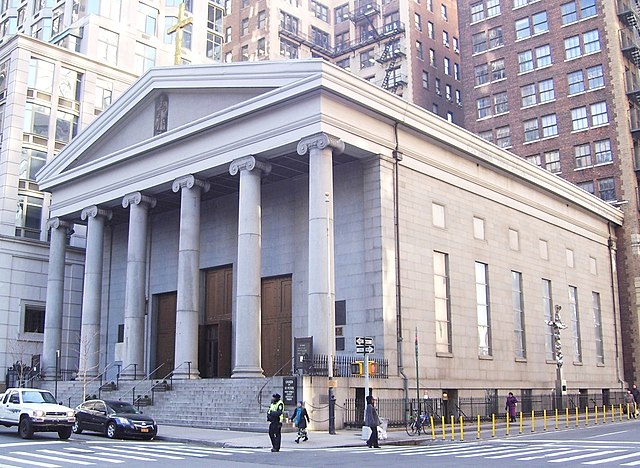
St. Peter’s Roman Catholic Church, located at 22 Barclay Street and Church Street in Manhattan’s Financial District, was designed by John R. Haggerty and Thomas Thomas in the Greek Revival style and has six Ionic columns.
Right Rev. Bishop Hughes officiated at the church’s dedication on February 25, 1838. Dr. Power delivered the Dedication sermon, and Mozart’s 12th Grand Mass was played.
The parish, which is part of the Roman Catholic Archdiocese of New York, is the oldest Roman Catholic parish in New York State, and it replaced an older structure erected in 1785–86.
The old church served as a place of worship until 1834, when it was demolished and replaced with the current edifice.
In 1965, the church was named a New York City landmark, and in 1980, it was listed to the National Register of Historic Places. Federal, state, and local entities have designated the current church as a landmark.
4. Trinity Church
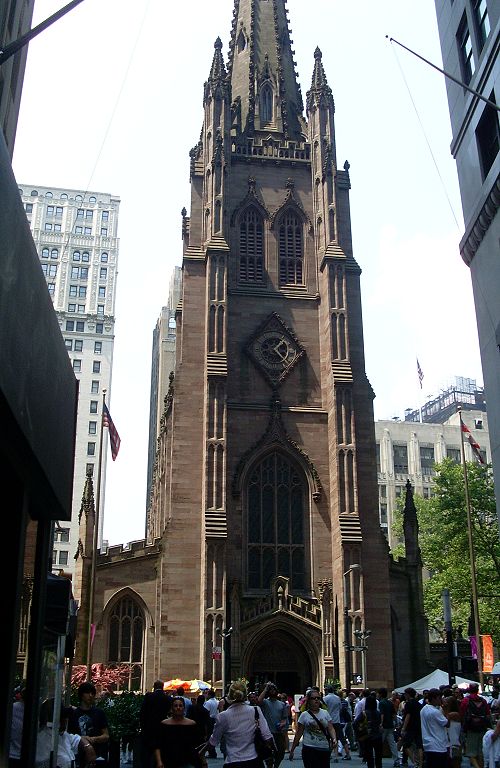
Trinity Church is a historic parish church in the Episcopal Diocese of New York, located at the junction of Wall Street and Broadway in New York City’s Financial District.
Trinity is a historic high church known for its history, location, architecture, and endowment, with an active parish based on the Episcopal Church and the international Anglican Communion in missionary, outreach, and fellowship.
Trinity runs two chapels in addition to its main facility: St. Paul’s Chapel and the Chapel of St. Cornelius the Centurion on Governors Island. Trinity formerly included the Church of the Intercession, the Trinity Chapel Complex, and numerous other Anglican churches in Manhattan.
The present structure, Trinity Church’s third, was designed in the Gothic Revival style by Richard Upjohn.
Trinity Church’s earliest edifice was a single-story rectangular church facing the Hudson River, built in 1698 and destroyed in the Great New York City Fire of 1776.
The second Trinity Church, which faced Wall Street, was dedicated in 1790. The present church edifice was built between 1839 and 1846 and was the tallest structure in the United States until 1869, as well as the highest structure in New York City until 1890.
A reredos and altar were added in memory of William Backhouse Astor Sr. in 1876–1877, according to the plans of architect Frederick Clarke Withers, who also enlarged the back.
The Trinity Churchyard, one of three utilized by the church, is close to the church structure. Trinity also administers real estate investments with a total value of more than $6 billion as of 2019.
Trinity’s main building is both a National Historic Landmark and a New York City landmark. It also contributes to the Wall Street Historic Site, an NRHP district established in 2007.
5. The Basilica of Saint Patrick’s Old Cathedral
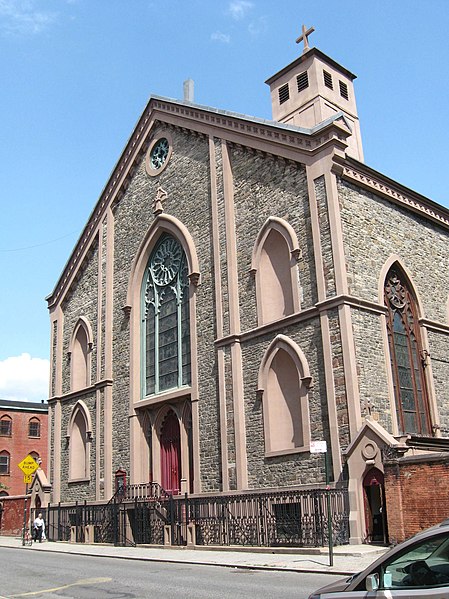
The Basilica of Saint Patrick’s Old Cathedral, often known as St. Patrick’s Old Cathedral or simply Old St. Patrick’s, is a Catholic parish church, basilica, and former cathedral of the Archdiocese of New York in New York City’s Nolita area.
Built between 1809 and 1815 in the Gothic Revival style by Joseph-François Mangin, it served as the archdiocese’s seat until the present St. Patrick’s Cathedral in Midtown Manhattan built in 1879.
Liturgies are held in three languages: English, Spanish, and Chinese. The church is located between Prince and Houston Streets at 260–264 Mulberry Street, with the main entrance on Mott Street. The parishes of Old St. Patrick and Most Precious Blood amalgamated, and the two churches now share pastors and administrative personnel.
In 1966, the Old St. Patrick’s church structure was declared a New York City landmark, and in 1977, the cathedral complex was listed to the National Register of Historic Places. On Saint Patrick’s Day, March 17, 2010, Pope Benedict XVI designated it as a minor basilica.
6. St. Mark’s Church-in-the-Bowery
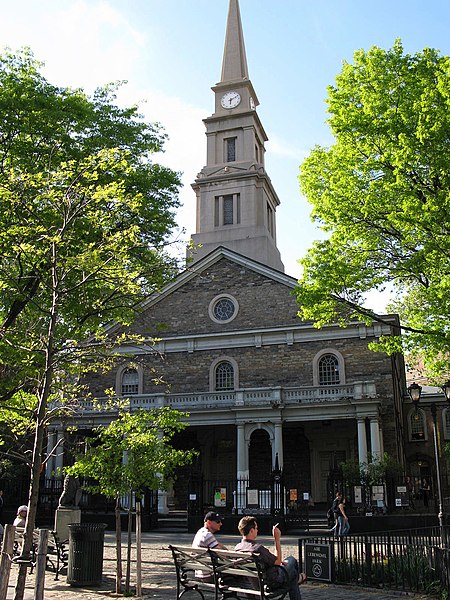
Located at 131 East 10th Street, between Stuyvesant Street and Second Avenue in New York City’s East Village area, is the Episcopal St. Mark’s Church in-the-Bowery.
More than three and a half centuries of Christian worship have taken place at this location, making it the oldest place of worship in New York City. It is the second-oldest church in the city.
In addition to the Poetry Project, the Millennium Film Workshop, and the Danspace Project, the rectory now houses the Historic Districts Council, the Greenwich Village Society for Historic Preservation, and the Historic Districts Council.
In 1915, Queen Wilhelmina and the Dutch government gave the church a bust of Petrus Stuyvesant, and in 1952, Queen Juliana of the Netherlands visited the church. Princess Margriet of the Netherlands and Queen Beatrix of the Netherlands came later, in 1981 and 1982.
7. Church of St. Mary the Virgin
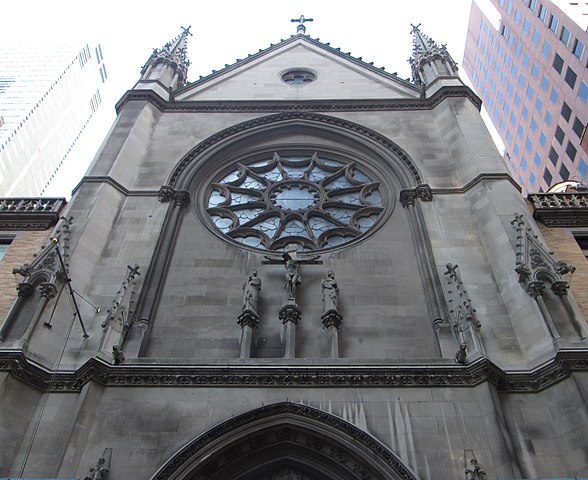
Located in the heart of Midtown Manhattan, the Church of Saint Mary the Virgin is a parish of the Episcopal Diocese of New York.
Some of the church’s structures may be found at 133-145 West 46th Street, in the middle of Times Square, while others can be seen at 136-144 West 47th Street, between Sixth and Seventh Avenues.
Because of the copious amounts of incense burned during services, the congregation has earned the nickname “Smoky Mary’s.”
The church, which was finished in 1895, has been hailed as “one of the best Gothic-inspired designs of New York’s late 19th century.” It was included on the National Register of Historic Places in 1990 and named a New York City landmark in 1989.
8. Cathedral of St. John the Divine
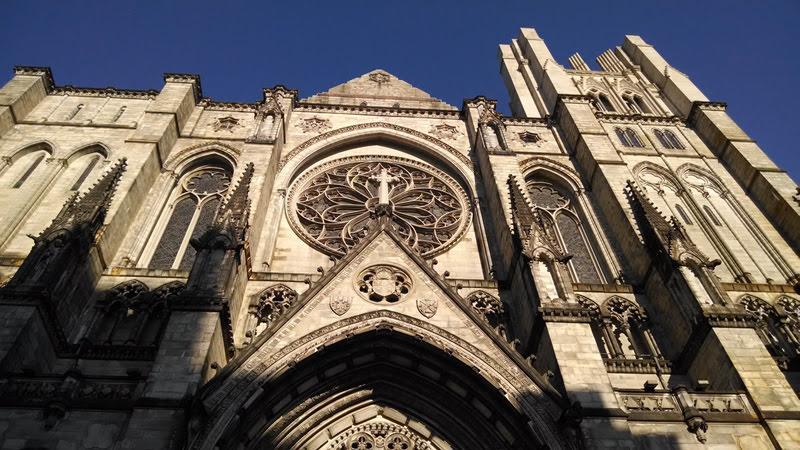
The Episcopal Diocese of New York’s cathedral is the Basilica of St. John the Divine, often known as St. John’s or St. John the Unfinished.
Located between West 110th Street (also known as Cathedral Parkway) and West 113rd Street, at 1047 Amsterdam Avenue, it serves the Morningside Heights area of Manhattan.
Only around two-thirds of the originally planned cathedral was constructed due to numerous significant design revisions and pauses in construction.
The Cathedral of St. John the Divine is the largest or second-largest Anglican cathedral in the world, and the sixth-largest church in terms of area, depending on who you ask.
St. John’s has a roof height of 177 feet and a total floor space of 121,000 square feet (11,200 square meters) across a length of 601 feet (183 meters) (54 m). Since there is so much space inside the cathedral, it has hosted countless concerts, plays, and art shows.
In addition, throughout its existence, the Cathedral of St. John the Divine has participated in a number of advocacy initiatives.
9. St. Bartholomew’s Church
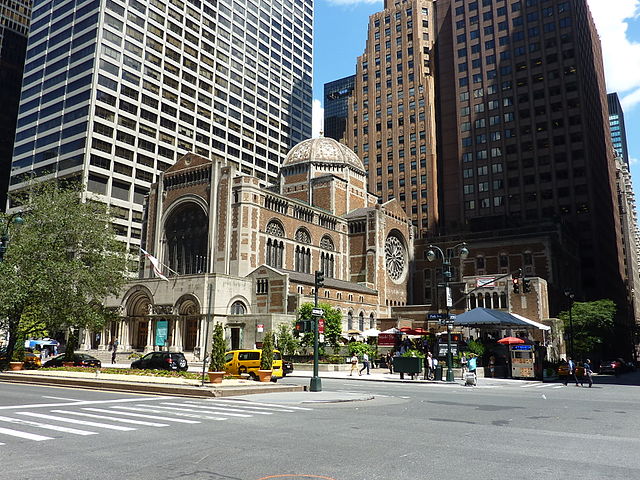
Commonly referred to as “St. Bart’s,” the ancient Episcopal parish of St. Bartholomew’s was established in January 1835 on the east side of Park Avenue between 50th and 51st Street in New York City’s Midtown.
The church marked 100 years since its inaugural service in its Park Avenue building in 2018.
In recognition of Bertram Goodhue’s contributions to the field of religious architecture in the early 20th century, the St. Bartholomew’s Church and Community House complex was designated a National Historic Landmark on October 31, 2016.
10. Saint Thomas Church
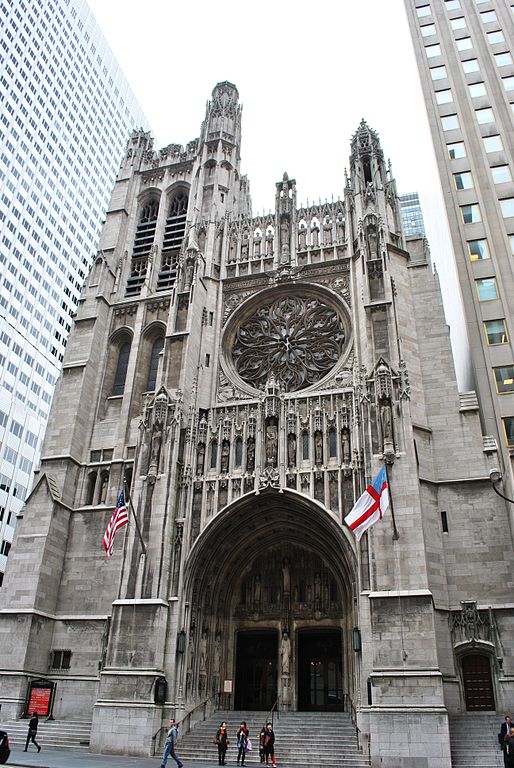
Located at 53rd Street and Fifth Avenue in Midtown Manhattan, New York City, Saint Thomas Church is a parish church of the Episcopal Diocese of New York.
It was established on January 9, 1824, and its name has changed over time. Other names for it include Saint Thomas Church Fifth Avenue and Saint Thomas Church in the City of New York.
The present building, the fourth church for the congregation, was constructed by architects Ralph Adams Cram and Bertram Grosvenor Goodhue in the French High Gothic Revival style and dedicated in 1914.
The Saint Thomas Choir of Men and Boys, an all-male choral choir, presents music from the Anglican tradition at worship services and hosts a year-round concert series at the church.
Saint Thomas Choir is the only church-affiliated residential choir school in the United States, and its members are all professional singers who teach the boys who attend the school.

